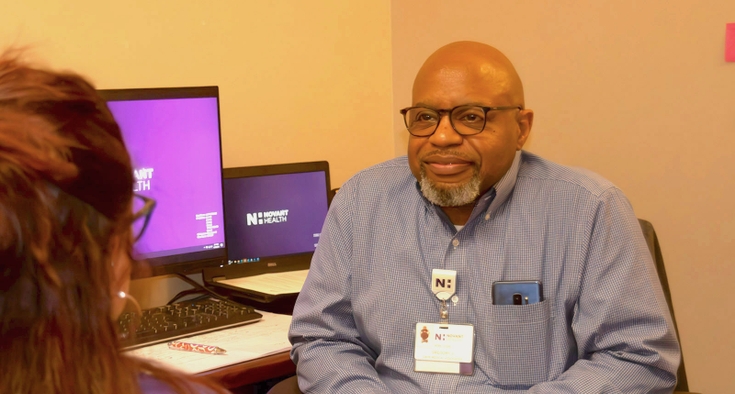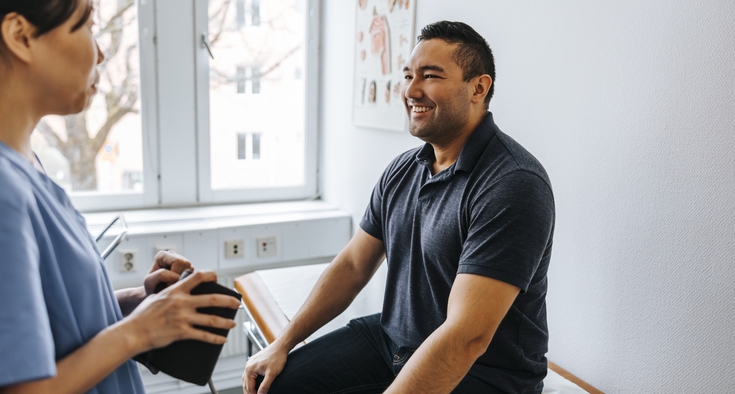Ask any primary care doctor and they’ll agree: Men are less likely to make annual doctor visits than women.

Middle-aged men in particular typically see a medical professional only after experiencing a scare, be it a heart attack or an issue with their sexual health, said family nurse practitioner Rand Pennington of Novant Health New Hanover Primary Care - Wilmington.
“I typically see middle-aged men establish care around lifetime events, like the birth of a child, as their priorities change,” Pennington said. “Men tend to come to the doctor’s office at the request of their significant other or a loved one, whereas women tend to seek out health care on their own.”
Putting off screenings and annual checkups means going undiagnosed – and therefore untreated – and missing the warning signs of what Pennington calls “a ticking time bomb.”
Among the illnesses where men are at greater risk of dying?
- Lung cancer: the leading cause of cancer death in men and women.
- Liver disease: includes cirrhosis and can cause liver cancer.
- Colon and rectal cancer.
- Death by suicide: the death rate for men was more than triple that of women between 2001 and 2021.
Good health starts with a visit to a primary care physician.
I’m a dad in my 40s. What about my health should I be most concerned with?
Making sure that you’re getting your preventive health care needs met. The problem is that many of the things we find in middle age don’t necessarily present themselves as diseases. We find them because of screenings. Male patients will often come in and say, “I was fine until I came here.” I always tell them, “No, you were a ticking time bomb until you came here.”
What are some of those conditions that threaten many middle-aged men?
Undiagnosed high blood pressure, prediabetes and elevated cholesterol levels are extremely common in middle-aged adults, especially males. We know that age is tied to risk. So unfortunately, as you get older, your risk for heart attacks continues to rise. And we find that during a middle-aged checkup.
We’re also seeing increased rates of colon cancer, so we start screening men and women at age 45, and sooner for those who are at higher risk.
Prostate cancer screening begins between the ages of 40 and 55, depending on your family history. Prostate cancer screening is a simple blood test that measures the level of prostate specific antigen (PSA) in your blood.
And there’s no way to know you have a condition unless you get screened for it?
Correct. Most people with prediabetes don’t have symptoms. But with adult-onset diabetes (known as Type 2), that’s where we catch people coming in and not feeling good – they report increased thirst, hunger and urination. And most of them have had prediabetes for decades before they ever realize it.
And is there any way to address Type 2 diabetes at that point?
Lifestyle changes cannot be overstated. Talk to your doctor about diet, exercise and lifestyle. There are also medications recommended for patients who have prediabetes to delay the onset of diabetes, because the onset can be reversed.
Best doctors. Amazing nurses. Remarkable care.
Read more here about how we're helping men lead longer, healthier lives.
What’s the best way to encourage our dads, of any age, to get in there, to see a doctor once a year and change some bad lifestyle habits?
I don’t think anybody can convince anybody to make a change. That’s something that people have to do themselves. I have this conversation a lot with patients who have diabetes. My first question is, “What matters to you at this point in your life?” They understand that diabetes can affect their long-term health outcomes, but many are not looking to make huge lifestyle changes.
I always tell patients who have diabetes that diabetics die from heart disease. But the number of cases of undiagnosed prediabetes is unclear, which is why there are efforts by the CDC to prevent the onset of diabetes. About 98 million Americans – more than 1 in 3 – have prediabetes. And more than 80% of those who have it don’t know they have it.
I’m curious how those conversations with patients unfold. I know you have to be direct, but is it difficult to have them?
It’s difficult to have them, but I also think that it’s all about the approach. There’s a big push in medicine right now to ask somebody if you can talk about sensitive topics – including obesity and sexual health – before you talk about them. And if it’s not OK from somebody’s perspective, then maybe we revisit it in a different way.
I think you have to meet each patient where they’re at and see what’s possible from there. It’s trying to look through the lens of what’s important to each individual, and then tailoring a treatment plan for them. So your dad might say, “I really like red meat, and I’m not going to quit smoking.” My job as their primary care provider is to make sure they understand what the risks are and that there are resources available to help them.
We deal with difficult topics. But the patient is in control of their health.










